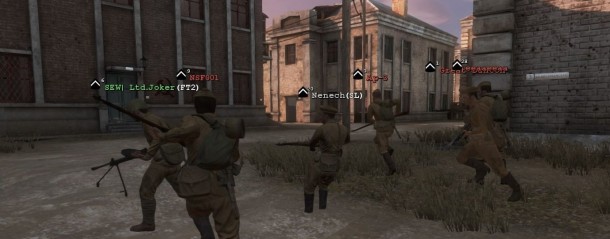Our Verdict
Satisfying, suspenseful multiplayer is more than the sum of its parts, but marred by bugs. Ignore the awful singleplayer.
PC Gamer's got your back
Red Orchestra 2 is the best murder simulator I've ever played. It's not the best first-person shooter or multiplayer game, or even the best team-based multiplayer game. It's certainly not the best World War II game, and its singleplayer is the worst I've played in years. But in the killing, and in the being killed, Red Orchestra 2 is a terrifying and satisfying experience.
Let's talk about you for a minute. You're a soldier in either Hitler or Stalin's army, and you're shit-scared. You've got your back against the wall in a room with one door, two windows and three walls, and you're peeking around a corner into the exposed core of a half-destroyed building. Every room could conceal an enemy soldier, and you've died a hundred times already, always from that one angle you didn't check.
Looking down through the rubble, you see an enemy soldier break from behind a wall. You aim and fire in a single motion. You've shot him and now he's dead. It's exactly like a million other games, but it feels nothing like any other game. It's the little things that make the difference, such as the sound of your own breathing when you lifted the rifle to your face, and the way it bobbed slightly in your hands. It's in the mark on your enemy's chest where the bullet hit, and the way his blood spritzed from his back, marking that bullet's exit. It's in the way he fell, forced by some terrible weight. Sometimes, but not this time, it would be the way he clutches his stomach, yelling in Russian, or the way he fires his machinegun madly during his last few seconds of life.
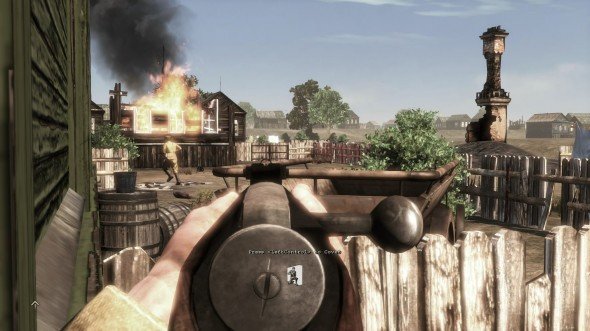
At some point, the developers of Red Orchestra 2 realised that if the primary interaction in your game is killing, then you should probably make the killing feel incredible. It's this attention to detail that turns an otherwise ordinary game, a slightly more realistic Battlefield, into something great, with Soviets fighting Nazis across mother Russia.
Take the game modes, for example. The most popular is Territory, in which one team starts in control of a map's capturable points and the enemy must take them. In this mode, reinforcements spawn every 20 seconds or so, and on maps designed to support 64 players it does a fine job of focusing attention on the shifting frontline. But it did the same in Battlefield 2, where it was called Conquest mode. Countdown mode has similar attack/defend objectives, but players get just one life per round, and the teams swap sides midway. No one is currently playing it. The third mode is Firefight, a team deathmatch variant which is popular, but feels as if it's missing the point of Red Orchestra.
While the weapons feel remarkable, the classes that carry them are familiar. There's the Assault class, with a sub-machinegun; the Marksman, with a sniper rifle; the Rifleman and Elite Rifleman; and a few others. The few inventive classes, such as Squad Leaders and Commanders, do little to change the flow of battle. Both roles have valuable abilities, but nobody follows orders on public servers.
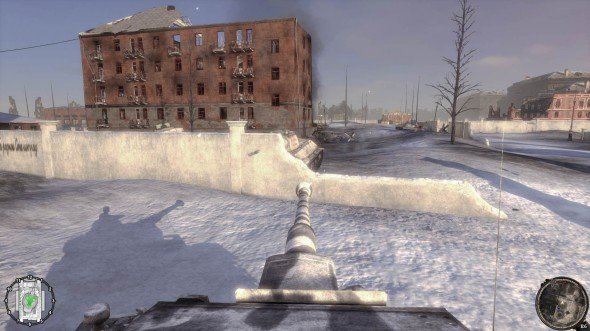
Even tanks don't add much to the experience. They require a whole different set of skills to use well, and have lovingly detailed interiors, but they are an easily ignored nuisance on the few maps that actually include them. On any server I've ever joined, the one tank-only map is the moment in the war when everyone disappears to write letters home to their mothers.
Let's be clear: none of these things are bad, they're just not why Red Orchestra is great. Ignore how dull the idea of another World War 2 shooter sounds, and look to the experiences RO2 provides. Again, it's the little things that have made me play it for 25 hours in a week.
It's creeping through the ruined buildings of Pavlov's House, one of the best maps, and jumping every time you see a piece of paper float through the air. It's listening to the footsteps echoing through the building, and freezing as you hear creaking on the stairs. It's the time I rounded a corner to come face to face with a Nazi holding a grenade above his head, bayoneted him in the stomach, and then dived down some stairs to escape the blast. It's the thrill of sprinting across an open field, enemy machinegun fire whizzing all around you.
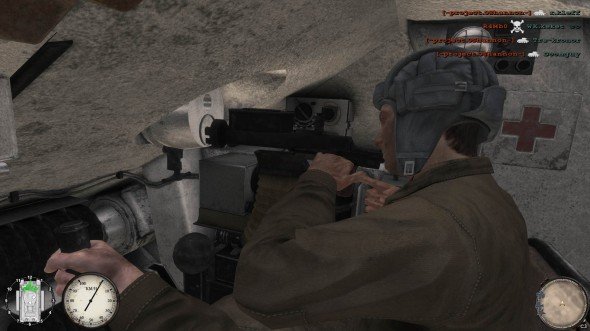
Death in RO2 is so sudden and violent that you're constantly on edge, an experience that's exacerbated by all the little pieces of information the game is keeping from you.
Firstly, at a distance there's no easy, instant way to tell if a soldier is on your side. The uniforms are distinct, but not the fluorescent green cycling jackets you need on a smoky battlefield. If you're close to someone, looking at them, and they're on your side, their name will appear, but often you don't have that kind of time.
Secondly, there's no instant kill confirmation. You'll be fighting across the ruined tenements on the wonderful Pavlov's House map, and you'll spot a head in a window across the street. From the shape of the helmet, you'll infer that it's an enemy and fire. The head will disappear from view. Are they dead? Did you miss? Are they wounded and bandaging themselves? Is it safe to move on? You can only hope. Wherever it can, RO2 makes murky what other games want to be clear. There's no ammo display on the HUD; you have to check the barrel for a rough estimate, or count your own shots. Realism mode, which is activated on roughly half of the servers currently running, removes certainty altogether by taking out friendly names, kill confirmations and the radar. It doesn't make a huge difference, but I had more fun in non-realism mode.
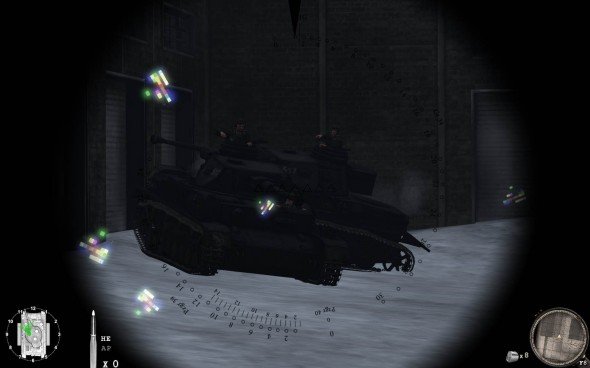
Lastly, the heart-munching adrenaline you feel in front of your PC is mirrored in the soldier you're controlling. When you're stood at a window and bullets start to chip against the frame, all the colour drains from the screen, the world blurs, and your aim becomes worse than a drunk teenager in a nightclub bathroom. You need to get out of there to catch your breath, like the person who enters the bathroom after the teenager. It's a smart way to stop camping.
All this attention to detail hasn't prevented the game from being miserably broken. Connecting to a server frequently plops me on to a team selection screen where the buttons don't work. The server browser refreshes only once, meaning I have to restart the game to try again. If I do successfully connect to a server, the bugs don't stop. Sometimes when I die, I'm unable to re-spawn until I re-select my class. The XP system, which is supposed to reward you with new weapons, is completely broken, and the Steam achievements system will often reward you for things you haven't done. At least once every two hours, on two different PCs, the game crashed entirely.
It's like buying a beautiful dining table from eBay, having your editor help you carry it up two flights of stairs, and then discovering it has Death Watch Beetles pupating inside it. Tripwire say they are aware of the issues, and I'm confident they'll fix them, but right now it makes playing a chore.
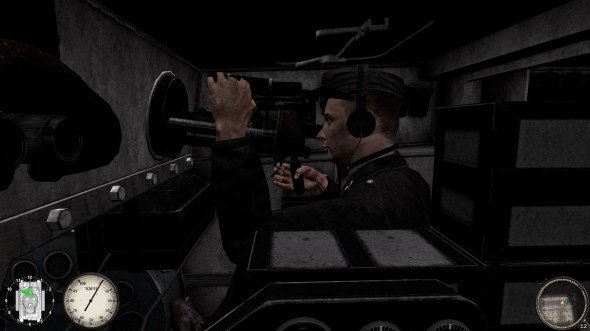
Less likely to be fixed any time soon are the German and Soviet singleplayer 'campaigns', which amount to nothing more than multiplayer matches with bots, connected by brief, animated history lessons. They would be fine, but the bot AI is more stupid than the larvae tunnelling under my dinner plates.
Let's make a list, then. The AI soldiers are blind, and will run directly past soldiers on the enemy team without firing. They're cripplingly indecisive, and will leap in and out of the same window over and over. If an enemy is close enough, he'll try to melee you, but if you run backwards, he'll chase you interminably and never fire.
I've seen machinegunners set up with their backs to the enemy. I've seen machinegunners set up on top of kitchen cabinets, facing a wall. I've seen soldiers run in infinite circles, unable to navigate a corner. I've seen enemy tanks drive forever into walls, and crash into the front of me, but never fire.
The singleplayer option appears at the top of the main menu, and to newcomers who aren't familiar with Red Orchestra it provides a terrible introduction. It should not have been released. Ignore it.
But don't ignore the game. By perfecting a lot of tiny, gruesome details, its developers have created an experience where killing a man is as satisfying as getting a tetris, and when I close my eyes I'm still firing rifles in my head.
Satisfying, suspenseful multiplayer is more than the sum of its parts, but marred by bugs. Ignore the awful singleplayer.
